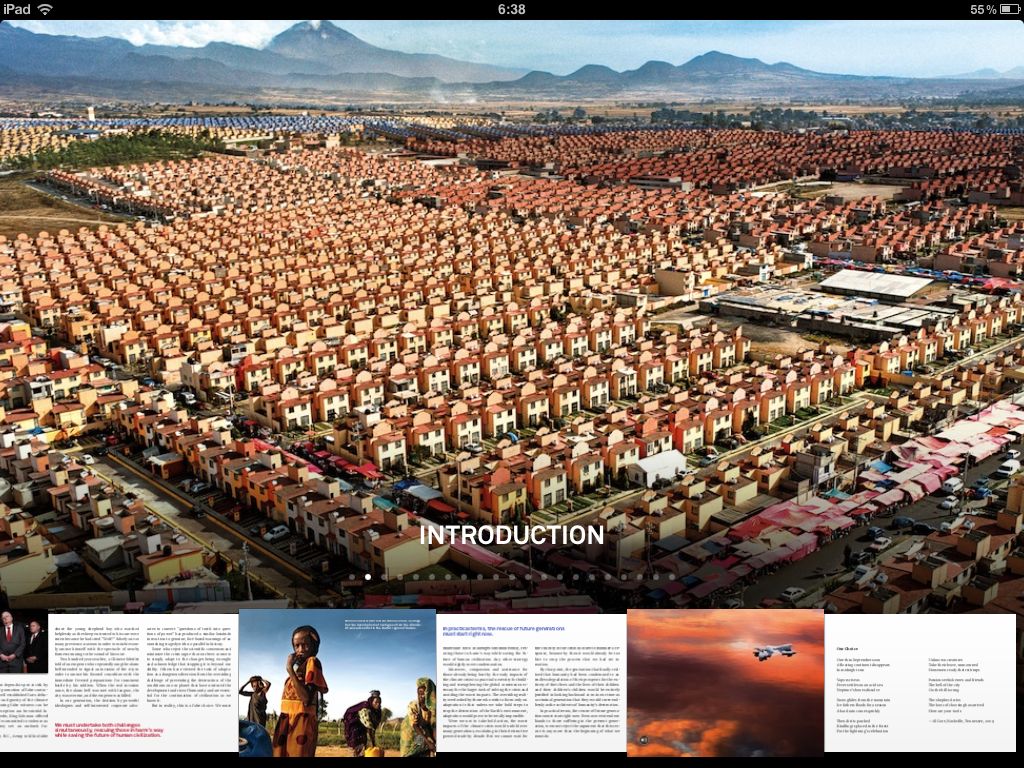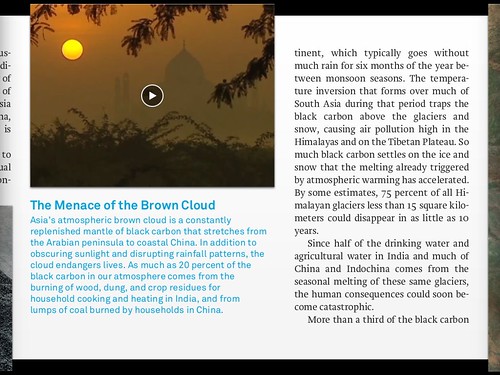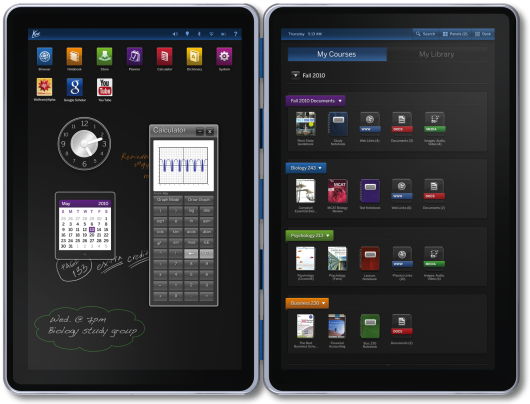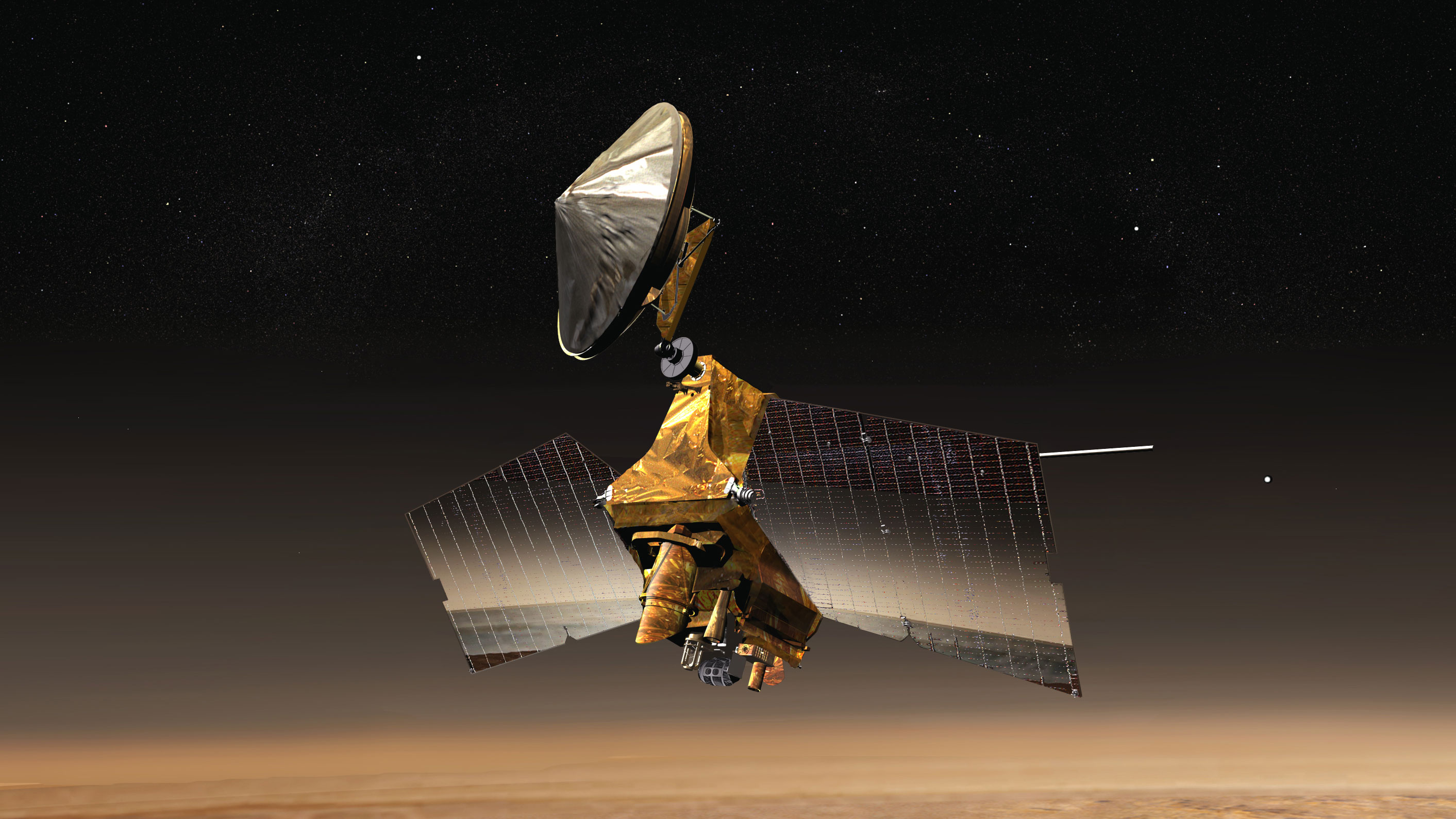The promise of enhanced ebooks has been around since the first text flickered on a computer screen, but this promise has rarely been realized in practice. Most past efforts to create computer-based books with embedded digital media elements have been cumbersome, slow, difficult to navigate, and—all in all—not worth the effort. An entire industry rose and fell around this concept as “interactive” publishers tried to figure out how to use the capabilities of CD-ROMs to maximum advantage. While some of the pioneering titles were interesting and hinted at the potential, many of these attempts were like strange animal hybrids, dogs with wings and duck feet or rabbits with multi-faceted spider eyes and tentacles. The pieces just didn’t fit together that neatly.
A new app for the iPad, Our Choice: A Plan to Solve the Climate Crisis, based on Al Gore’s print-published work of the same name, shows genuine polish and cohesiveness in its execution. The main difference from earlier works is the fluid, natural means for navigating the book using the familiar iPad gestures: sweeps, pinches, double taps, and so on. As Mike Matas points out in the TED video below, “Anything that you see in the book you can pick up with two fingers and lift off the page and open up. If you want to go back and read the book again, you just fold it back up and put it back on the page.”
As to enhancements, the book includes over an hour of documentary footage and animations. Infographics make it easy to dip into the facts and figures underlying the book’s solutions, such as the map of the U.S. that lets you zoom in and explore wind potential state-by-state.
With tablet sales beginning to cut into e-reader sales (primarily Apple’s iPad siphoning off sales from the Kindle) the greater functionality of the tablet comes into play, making it far easier to intersperse animations, videos, expanding graphics, geolocation maps, and other elements into a vastly improved navigation system. It’s much like flipping through the pages of book, but better (yes, enhanced) in certain ways, letting you launch a video with a single tap, listen to background narration, or view an animation that shows how solar panels work. The fluid nature of the navigation makes a big difference, making the multimedia components an integral part of the book rather than something tacked on as an afterthought.
In terms of content, Gore’s survey of climate change issues generally does a very good job of focusing on the primary causes of greenhouse gas emissions (including animal agriculture, which is often overlooked in other analyses). The solutions he proposes, however, could use some work, as the traditional high-tech pipe dreams of clean coal and nuclear power are presented in glowing terms, while the promising possibilities of microgeneration, the fastest growing sector in the energy industry, get short shrift.
What we lack now is a consistent publishing tool, a way for the eager legions of ePublishers to exploit the capabilities of the iPad and other tablets, such as Motorola’s Xoom and the BlackBerry PlayBook. Adobe’s hammerlock on publishing tools offers rudimentary paths for interactive ebook creation, but it would be a far more useful scenario if Push Pop Press fulfills their promise of licensing this technology for everyone’s use. And as e-readers become more like tablets (consider the latest Nook Color) and tablets gain faster processors, higher resolution screens, and more memory, enhanced ebooks appear likely to enter the mainstream of ePublishing in the very near future.
Here’s a video of Mike Matas, one of the founders of Push Pop Press, offering insights on the creation of the Our Choice app.






